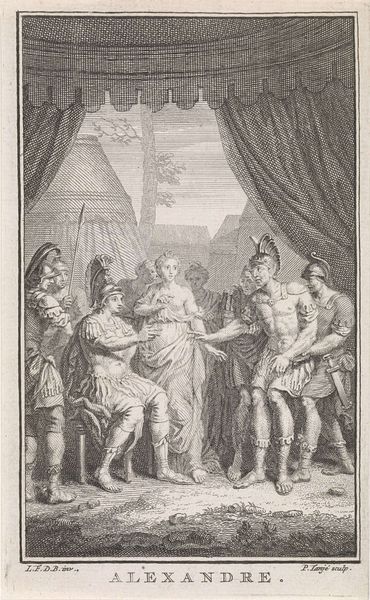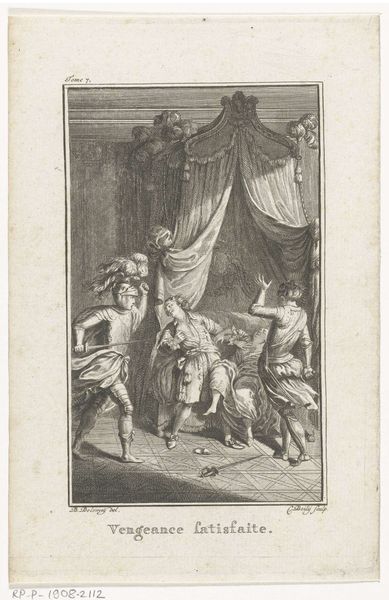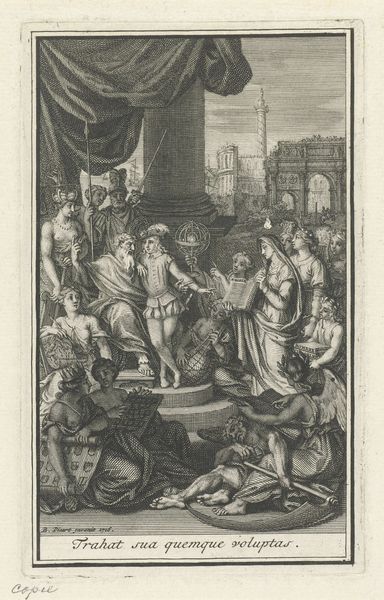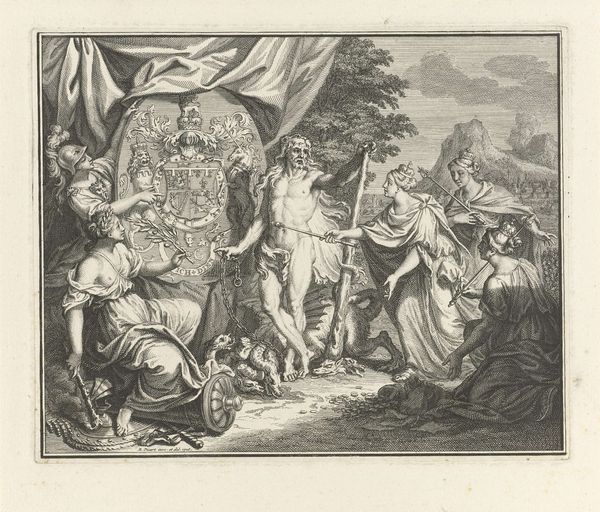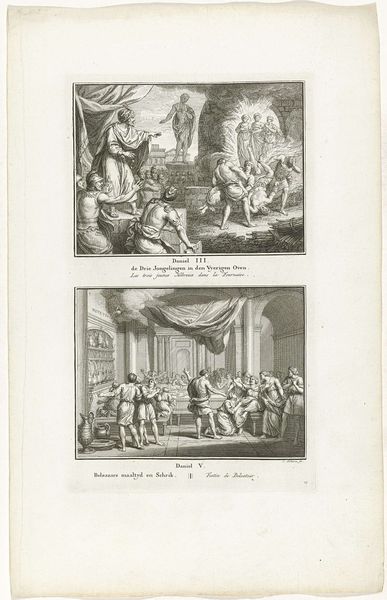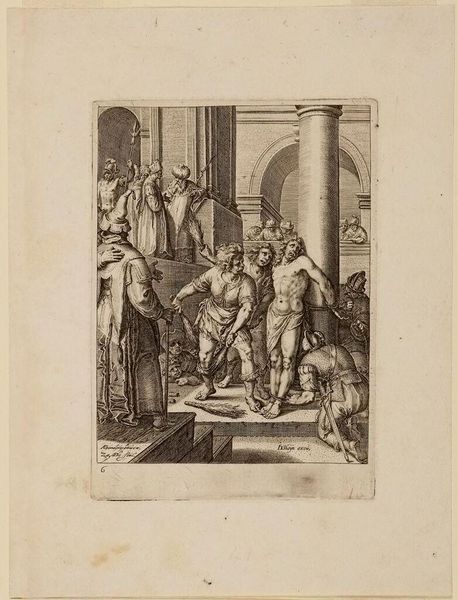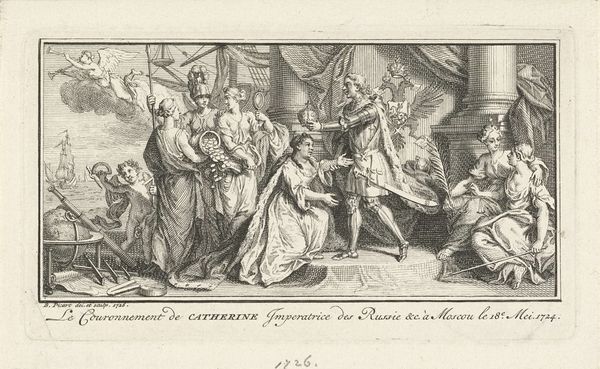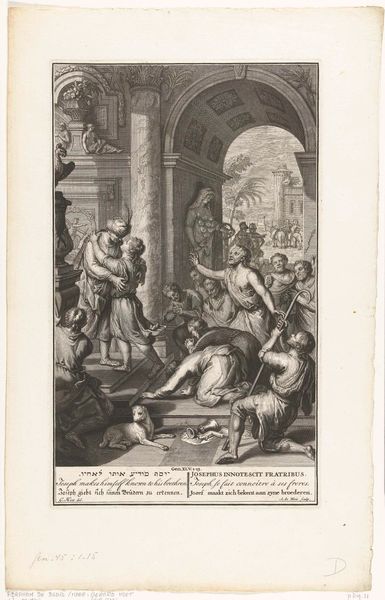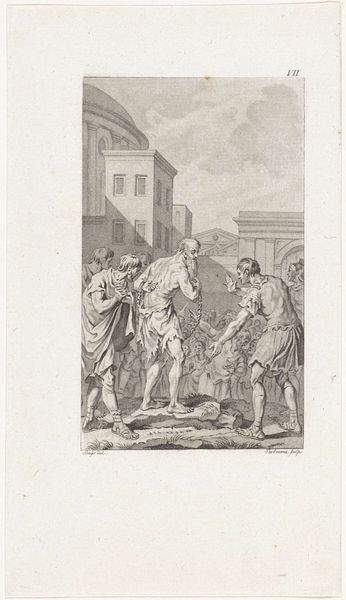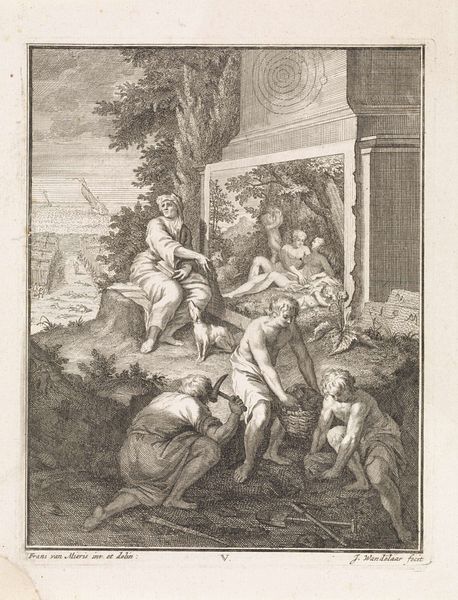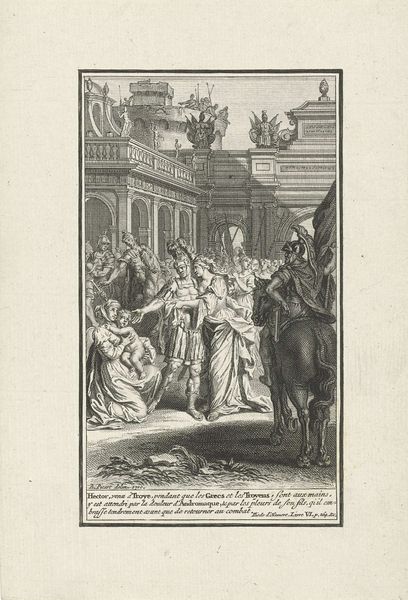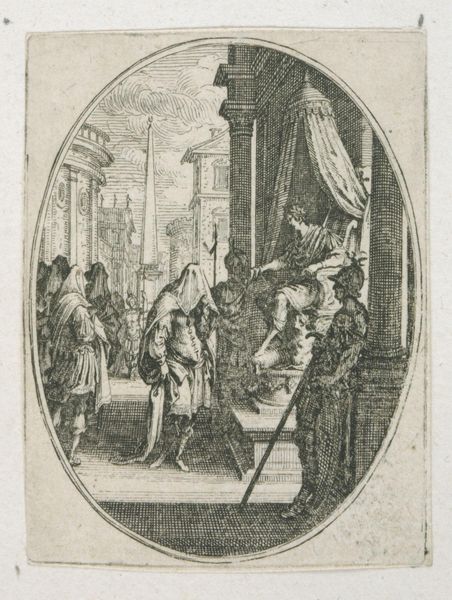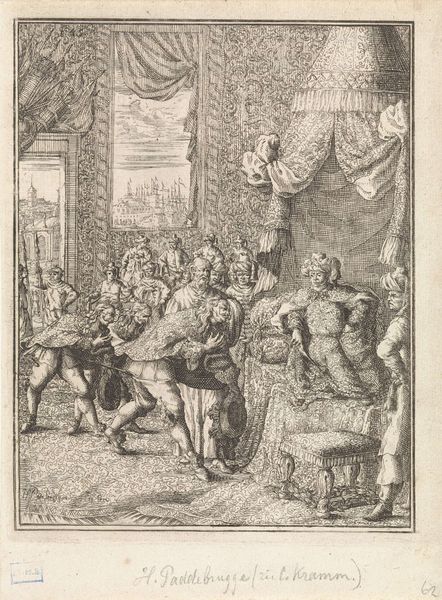
print, engraving
#
baroque
# print
#
figuration
#
line
#
history-painting
#
engraving
Dimensions: height 191 mm, width 131 mm
Copyright: Rijks Museum: Open Domain
Curator: This engraving by Bernard Picart, dating to 1710, is entitled "Twist tussen Achilles en Agamemnon," currently held here at the Rijksmuseum. It captures a very charged moment. What strikes you initially? Editor: Raw emotion, definitely. The clash between the figures is so palpable even through this lined, baroque style. Achilles is all rage and defiance. But more than that, the details. I see tents and what looks like a distant, besieged city behind him, like a stage backdrop. There is political context even in the landscape of this artwork. Curator: Exactly! The setting alludes to the Trojan War, the backdrop representing that very Greek campaign. It serves to emphasize the gravity and the public nature of this quarrel, right? Achilles's wrath has broader implications than a personal squabble. Editor: So, his anger is not simply about personal honor, but about the integrity of the war effort? His anger has historical, and thereby political, importance? And does it follow, then, that he is not just another disgruntled warrior, but almost a symbol of righteous indignation against authority? Curator: Precisely. He symbolizes individual moral outrage, even when set against collective aims. Notice the symbol of Agamemnon. He is cowering, clearly affected by the rebuke and in danger of losing the appearance of authority in the eyes of those he rules. Look too at how Picart rendered Achilles. He embodies strength and unyielding passion—a hero defying flawed leadership. Editor: And beyond that, it reflects the socio-political environment, doesn't it? To depict Achilles so prominently almost legitimizes resistance, reflecting anxieties about tyranny and potentially inspiring revolutionary thoughts within its 18th-century viewers. A bit dangerous, perhaps, for those in power at the time, right? Curator: A powerful way to look at it, absolutely. I had not considered it in this specific sociopolitical way. The image’s cultural impact surely hinged on how it was perceived then. It remains compelling now because of these layers. Editor: It certainly complicates our understanding of this historical, even canonical, scene! A rich artwork indeed, both narratively and politically.
Comments
No comments
Be the first to comment and join the conversation on the ultimate creative platform.
